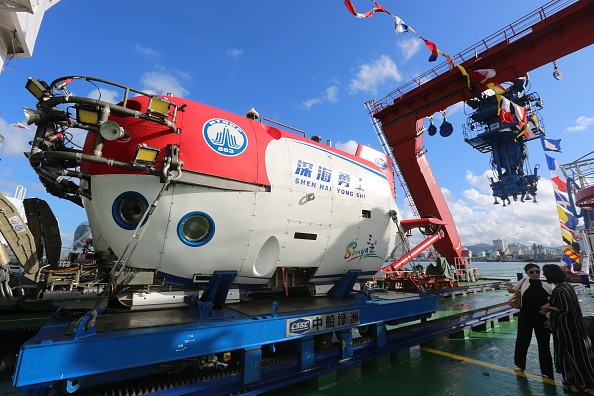
In the past week, Chinese military flights in the South China Sea "at no time" posed no danger to the region's U.S. Navy aircraft carrier strike force.
"The Theodore Roosevelt Carrier Strike Group closely monitored all People's Liberation Army Navy (PLAN) and Air Force (PLAAF) activity. And at no time did they pose a threat to U.S. Navy ships, aircraft, or sailors," the U.S. military's Pacific Command said.
Speaking in anonymity, a U.S. official said that the Chinese plane did not arrive within 250 nautical miles (460 km) of the U.S. Vessels from the Navy.
On January 23, the Chinese army flew a large number of warplanes into the southwest corner of Taiwan's air defense identification zone, including nuclear-capable H-6K bombers and fighter jets (ADIZ). The timing coincided with the Roosevelt group's entry through the Bashi Channel into the South China Sea, which separates Taiwan from the Philippines.
The flight of the Chinese warplanes may have been a reaction to Roosevelt's strategic waterway operations, some analysts said, raising questions about the potential for a conflict to escalate into miscalculation.
The Regional security and diplomatic sources familiar with the situation said that on missions starting mid-morning on January 23, coinciding with the U.S. carrier group passing south of the Pratas, China's air force was dispatched.
READ: Police Probe the Posting of Claudia Conway's Censored Pic on Her Mom's, Kellyanne Conway, Twitter Account
China has long been concentrating its military forces on defending itself against the U.S. Now, they are seen carrying out drills to simulate an operation against an aircraft carrier, the sources said.
Almost all the South China Sea's energy-rich waters, where military outposts on artificial islands have been built, are claimed by China. The claim has been declared by the International Court of Arbitration in The Hague to have no legal basis.
Parts of the South China Sea are also claimed by Brunei, Malaysia, the Philippines, Taiwan, and Vietnam.
In the Sino-US relationship, the waters have become a flashpoint, too.
On the other hand, China is routinely accused by the United States of militarizing the South China Sea and attempting to bully Asian neighbors who may want to tap its vast oil and gas reserves.
ALSO READ: State Attorneys General Remind Biden Any Unconstitutional Actions Will Not Go Unchallenged
South China Sea Navigation and its Freedom
The U.S. Navy routinely conducts, in compliance with The Hague's 2016 decision, in what it calls freedom of navigation operations by vessels close to some of the islands controlled by China, asserting the independence of access to foreign waterways.
The US Pacific Command reiterated that they are determined to continue their operations in the whole region. In which long-standing military alliances with China's neighbors have been maintained.
"The United States will continue to fly, sail and operate wherever international law allows, demonstrating resolve through our operational presence throughout the region," Pacific Command said.
The latest run-in came only a week after China had passed a new law authorizing their coastguard to fire on foreign vessels that will challenge "national sovereignty, sovereign rights, and jurisdiction" for the first time directly.
The coastguard of China is the region's most strong force of its kind.








